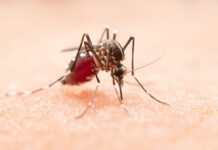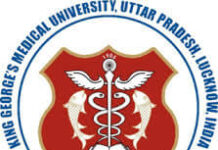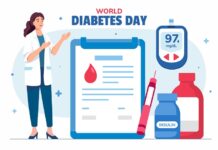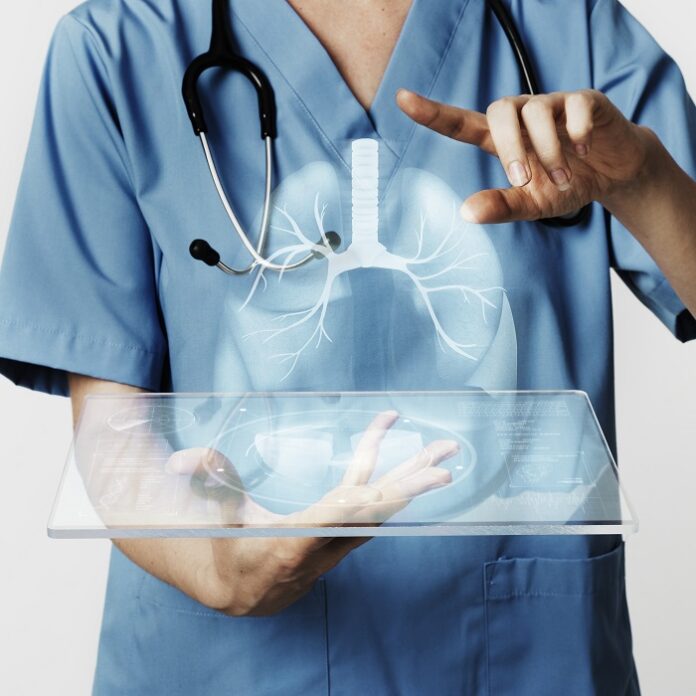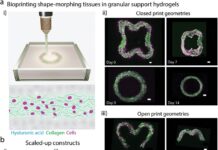Tuberculosis continues to be a serious health concern in India. The emergence of totally drug-resistant tuberculosis (TDR-TB) has made this situation even worse. India was responsible for 36% of global TB fatalities among HIV-negative persons in 2021 and was among the four countries that accounted for most of the estimated recent increase in TB deaths globally (Global Tuberculosis Report, 2022). The Indian government said in 2020 that it will employ its National TB Elimination Program to eradicate tuberculosis from the nation by 2025.
Against this backdrop, The Indian Practitioner interviewed Dr Vijay Kumar Chennamchetty, Lead Interventional Pulmonologist & Sleep Disorder Specialist at Apollo Hospitals, Jubilee Hills, to gain insights into the current scenario of TB in India and the way forward to addressing it.
The Indian Practitioner (TIP): What are the reasons for Multidrug Resistant TB (MDR TB) raging and why is TB so prevalent, so much so that India is considered the TB capital of the world?
Dr Vijay Kumar Chennamchetty (Dr.VC): The main reason for the spread of MDR TB is irregular treatment and poor adherence to drug sensitive TB medications which results in relapse, treatment failure, and eventually drug-resistant TB (DR TB). Primary DR TB is also increasing in incidence as it is spreading to naïve populations from the TB medication defaulters. One of the main reasons is dropping out due to side effects without seeking a doctor’s advice. Delay in presenting for the diagnosis, lack of awareness, inappropriate supervision by the health care providers, insufficient training and skills, and sub-optimal implementation of guidelines for MDR TB also contributes to a significant extent.
TIP: For any illness, early detection is half the problem addressed. This calls for accurate diagnosis at the nascent stages. Can the latest diagnostic techniques help in early diagnosis? What are the innovations and advances in TB diagnosis?
Dr.VC: Given the limitations of culture and direct microscopy, the WHO recommends a biomolecular test as the initial diagnostic test in a suspect patient. Current molecular tests endorsed by WHO include Xpert MTB/RIF and Xpert MTB/RIF Ultra assays, Truenat MTB. Upfront usage of these Nucleic acid amplification tests is mandatory to diagnose Tuberculosis. They are quite user-friendly & in all practical cases; we can expect the report within a few hours of sending samples. In case of complex scenarios, we end up using Line probe assays & rarely Whole genome sequencing.
TIP: What is the impact of Covid, particularly long Covid, on TB? Has it aggravated the problem of TB? Have there been any studies conducted on long Covid and TB?
Dr.VC: Covid has had a significant impact on the delivery of various tuberculosis prevention, surveillance, and treatment programs. Lockdown and public health guidelines have resulted in tough challenges in the traditional management of tuberculosis.
Large numbers of patients who have TB or have recovered from it are left with fibrotic scarred lungs and compromised lung function and the effects of COVID-19 were particularly devastating in this patient population with severely affected subgroups of Covid. It is estimated that more than half of all TB survivors have some form of persistent pulmonary dysfunction (both obstructive and restrictive) despite microbiological cure, leaving millions of patients potentially more susceptible to the effects of superimposed COVID infection.
This post-COVID pulmonary fibrosis, superimposed on the fibrosis caused by the sequelae of pulmonary TB, has resulted in even more devastating disability in severe or critical Covid 19 conditions. For someone with latent TB, contracting COVID-19 could activate the bacterium, potentially leading to an accelerated and more severe form of the disease which could lead to hospitalization and rapid death. In the scenario of long covid, the effects are too devastating given delayed diagnosis as the clinical picture is similar to generalized malaise, weakness, weight loss, and lack of appetite as seen in TB. There are studies on TB and covid Coinfection but there is no data available on long covid and TB which has to be thoroughly evaluated and there is a significant need for many studies and research.
TIP: Earlier, TB was thought to be only manifesting in the lungs. Today, it is understood that TB could be present in many parts of the body, in glands, various organs, bones, and even the brain. Could you explain and elaborate on its etiopathogenesis?
Dr.VC: Whenever TB affects the rest of the organs other than the lungs, we call it extra pulmonary TB (EPTB). EPTB is a well-known entity for many decades & research mentions that Covid 19 doesn’t increase the risk of acquiring EPTB.
Risk factors for EPTB:
Immunological risk factors
HIV infection is the greatest risk factor for the development of EPTB disease in persons with latent TB, due to a weakened immune system. The risk of TB progression is much higher at about 10% per year in HIV-positive and other immune-compromised individuals who are not receiving highly active treatment for HIV. People receiving immunomodulatory drugs for Autoimmune diseases, cancer patients on immunotherapy, and chemotherapy, patients on steroid therapy for ILDs, and various reasons are at increased risk of EPTB.
It has been reported that host risk factors for EPTB include younger age, female sex, and non-white race. Previous studies illustrated that the reactivation of tuberculosis seems to occur at least four years after the initial diagnosis of diabetes and that the risk of death was high in diabetic patients with EPTB and previous liver disease.
Genetic factors
TLR2 genotype T597C was found to be associated with TB meningitis in a case-control study and increased the severity of neurologic symptoms. In this same point of view, genetic polymorphisms in interleukin were associated with pleural TB. In consumed raw milk, the identification of M. bovis and atypical mycobacteria has been identified.
TIP: How can the spread of TB be checkmated? What steps should be taken to prevent and/or retard transmission?
Dr.VC: Person-to-person TB transmission occurs via inhalation of droplet nuclei (1-5 microns in diameter).
Factors a/w risk of TB transmission include:
a) active untreated pulmonary or laryngeal TB
b) cavitatory disease
c) Sputum positive cases
Procedures a/w TB transmission:
a) ET intubation
b) Bronchoscopy
c) Sputum induction
d) Chest physiotherapy
e) Aerosolized drug administration
f) Irrigation of TB abscess.
Components of TB infection control:
The hierarchy of control measures is as follows:
1) Administrative controls
2) Environmental controls
3) Respiratory protection
1) Administrative Controls
– development and implementation of written policies and protocols to ensure:
a) Rapid identification
b) Isolation
c) Diagnostic evaluation
d) Treatment
– early identification of cases, Proper education, training and counselling and Prompt testing of HCW for infection
2) Environmental Controls
Rooms should be isolated and maintain negative pressure.
3) Respiratory Protection
Appropriate respiratory protection consists of an N95 mask, powered air purifying respirator (PAPR).
TIP: Current protocols of treatment include a cocktail of drugs, taken multiple times during the day over six months and above.What are the newer drugs that have come up, if any, which are more potent and effective over a lesser time frame? Are any other novel treatments on the horizon?
Dr.VC: A) Piperine (A Bioenhancer): Enhances binding of Rifampicin to RNA polymerase reduction of dose, shortens the durationless toxicity Combination drug =INH 300mg +Rifampicin 200mg + Piperine 10mg orally (Under trial)
B) Pretomanid:
> It’s a Nitroimidazopyran (PA824) and Potent bactericidal which Inhibits cell wall mycolic acid synthesis.
> MDR and XDR TB -Bedaquiline + Linezolid studied.
> 100-200mg daily Orally – safe and effective in a DS-Sputum smear +ve adult pul. TB.
C) Caprazamycin-B (CPZ-B):
> Bactericidal (Inhibits synthesis of the cell wall), especially MDR strains and MAC isolates.
D) Others:
> Rifalazil (new rifamycin derivative)
> Gangamycin
> Sutezolid, close to linezolid is in phase-II trial.
> SQ 109, an analogue of ethambutol has a synergistic action with H and R.
> Delpazolid and PATA 169 are in phase 2 trials for MDR-TB.
Novel Ways:
Trials like Nix-TB and ZeNix have promising futures for oral regimens for XDR-TB and also the inclusion of newer drugs like Bdq and Dlm.
> In the Nix-TB trial, a prospective trial of 109 patients in South Africa with XDR-TB Or MDR-TB treated with Pretomanid (200mg OD for 26 weeks), Bdq (400mg OD for 2 weeks f/b 200mg three times weekly for 24 weeks), Linezolid (1200mg OD for 26 weeks), all given orally had excellent outcomes. (BPaL regimen) 2021 NTEP guidelines for All oral longer regimens for MDR/XDR-TB and Short oral Bdq containing MDR/RR-TB regimens have been introduced.
A) Longer Regimen:
> 18-20 months duration> Bdq(6), Lfx, Lzd, Cfz, Cs
> Lzd reduced to 300mg/day after 6-8months
> Bdq only for 6 months (400mg OD for 2 weeks f/b 200mg thrice weekly for 24 weeks)
B) Shorter Oral Regimen:
> 9-11 months duration
> 4-6 months: Bdq(6), Lfx, Cfz, Z, E, hH, Eto
> 5 months: Lfx, Cfz, Z, E
> Not to be used if there is exposure to fluoroquinolones Or another 2nd line ATT for > 1 month.
Trials With Repurposes Att:
> Trial with daily dosing of Rifampicin of 35mg/Kg to reduce the time for culture and a combination of Rifampicin 20mg/kg with Moxifloxacin to reduce treatment duration are complete.
> The results of a phase-III trial of a 4-month combination regimen that included Moxifloxacin Or Gatifloxacin, for DS-TB, namely the Oflutub trial, ReMox trial, Rifaquin trial are disappointing.
TIP: Consequences of existing treatment include multiple drug toxicities with serious side effects. How can the side effects be mitigated?
Dr.VC: According to WHO the side effects are classified into major or minor.
Minor side effects are treated symptomatically, and it is not necessary to stop any of the ATT. For major side effects, the offending drug should be stopped and restarted once the adverse effect is resolved.
> Throughout ATT, supplementation with vitamin B6 is done to prevent INH toxicity.
> Out of the 1st line, INH has maximum BBB crossing capacity, thus inhibiting activation of vitamin B6 and reducing GABA (resulting in CNS stimulant side effects) and Heme (resulting in anaemia and neuropathy).
> Thrombocytopenic purpura or pulmonary syndrome is an absolute indication to stop Rifampicin and never to start again.
> The incidence of ocular toxicity caused by ethambutol can be reduced or prevented with vitamin B12 supplementation
A) Drug-Induced Hepatotoxicity (DIH):
> It should be suspected when:
a) A rise of 5 times the upper limit of normal levels of AST and/or ALT
b) A rise in total bilirubin of 1.5mg/dl
c) Any increase in AST and/or ALT above pre-treatment levels with anorexia, nausea, vomiting, and jaundice
d) -ve for Hepatitisbl A, B, C, E
> Mild: transaminases less than 5 times the upper normal limit
> Moderate: transaminases 5-10 times the upper normal limit
> Severe: transaminases more than 10 times the upper normal limit.
> Investigate other causes like viral hepatitis.
> Once DIH is established, stop all hepatotoxic drugs and continue with substitutes like streptomycin, levofloxacin or moxifloxacin, along with ethambutol in the meantime.
> Once clinically and biochemically DIH has been resolved, the hepatotoxic drugs can be reintroduced in a phased manner starting with the one having the least hepatotoxicity.
TIP: What is the status of research in India on developing better and more effective treatments?
Dr.VC: Current research for better and more effective treatment for TB.
1. For XDR-TB: A 6-9 months 4 drug shorter regimen with all oral drugs (Delamanid + Bedaquiline+ Linezolid+ Clofazimine) for XDR-TB research ongoing.
2. Study Repurposing of econazole and adding to WHO shorter regimen for reducing the treatment duration of MDR-TB
3. For MDR-TB: A clinical trial with the shorter 4-drug oral regimen for 6-9 months as compared to the shorter WHO regimen, approved, and will be initiated shortly.
4. Pk studies on 2nd line ATT sanctioned.
5. Observational study of inhaled gaseous nitric oxide (gNO) for adults with drug-resistant pulmonary TB approved.
- For Drug sensitive TB: Following clinical trials with a regimen for improving efficacy and early culture conversion initiated:
1. Repurposed drug metformin along with ATT for better cure rate and prevention of relapse.
2. Repurposed drug Verapamil along with ATT for better cure rate and prevention of relapse.
3. High dose rifampicin (25mg/kg and 35mg/kg as compared to 10 mg/kg) for better and early cure rate
4. Repurposing Clofazimine: Phase II Clinical trial with repurposed drug Clofazimine by replacing ethambutol as part of the first-line anti-TB regimen to shorten the overall duration of treatment in DS-TB from 6 months to 4 months by replacing ethambutol for treatment of DS-TB is ongoing.
5. Phase I study to evaluate the safety and pharmacokinetics of a single dose of PLG encapsulated-ATD nanoparticles: and dose-escalation study Nano-formulations of the standard anti-TB drug: Initiated
6. EBA study with Feropenam approved and has been initiated.
7. Animal studies with Inhalational Rifabutin and INH ongoing completed and showed early clearance of bacilli from the animals as compared to standard treatment arms. Study with shorter duration proposed.
8. New anti-TB molecule: Transitmycin is a new drug molecule discovered by NIRT in collaboration with IIT, Madras and Periyar University. A promising anti-Tb against MDR-TB with anti-HIV activity molecule is undergoing animal study.
9. Clinical trial with Risorine [Rifampicin (450 mg and 600mg) and Piperine (225 mg)] for DS-TB for improving efficacy and early culture conversion approved and would be initiated soon.
- For latent TB: Clinical trial with Rifapentine for latent TB sanctioned.
TIP: How can the private sector hospitals and medical centers play a greater role along with the government health infrastructure? We understand as of now that the Government’s National TB control programme leads the way in setting protocols for treatment, access, and providing drugs and medicines, etc. How effective is this approach and the National TB control programme? The aspiration under this national programme is that TB in India will be eradicated by 2025. Is this realistic?
Dr.VC: The government of India, WHO, and PATH began the unique Private Provider Interface Agency(PPIA) model, aimed at engaging TB patients within the private sector. The model was first established in Mumbai with initial support from the Bill & Melinda Gates Foundation. It was designed to allow TB patients in the private sector to get access to free public sector drugs and subsidized state-of-the-art TB diagnosis. This brings to light the previously ‘invisible’ TB patients in the private sector, this would help with increased TB case notifications, treatment adherence, and improved diagnostic services.
Private practitioners were given a list of diagnostic centers where they could send presumptive TB patients to get free WHO-approved diagnostic tests using PPIA vouchers. This model also provided sample transportation services, so that patients did not need to travel to the testing labs. Upon confirmation of TB, the private practitioners would generate a voucher that patients showed to chemists belonging to the PPIA network to get medicines free of cost. These chemists were later compensated by PATH. In addition to free tests, patients also received regular support from field officers who motivated them to continue with the treatment. By leveraging Information, Communication, and Technology (ICT) tools, patients were also sent daily reminders via SMS and through a dedicated call center for ensuring treatment adherence.
The aim of TB eradication in India by 2025 is undoubtedly unrealistic. India reports the highest number of incident new TB cases, new multidrug-resistant (MDR) TB cases, and TB-related mortality. Considering its vast and heterogeneous population and the presence of enabling and social risk factors, this task seems to be very ambitious.
- The huge private sector in the country, treating at least 50% of TB cases which is largely disorganized poses a major challenge. Case studies have shown that the current quality of care is poor, especially in the private sector. All three components of TB elimination, namely reduction in incidence, mortality, and catastrophic expenditure need to target this huge private sector. Efforts are being made to rope in this sector more so with the launching of the National Strategic Plan (NSP) (2017–2025), however, they are unable to show the desired results.
- TB elimination will not be the responsibility of only the health sector as other departments involved with poverty alleviation, employment generation, education, etc., will also have an important role to play.
- Pandemic COVID-19 for the past 3 years and the unprecedented engagement of the health sector in its management has adversely affected all non- COVID activities as all resources have been directed to COVID management and TB control is no exception. Due to lockdowns, restrictions in movement, psychological fear of contracting the disease in health care facilities, diversion of health care workers for and management of COVID-19, utilization of diagnostic facilities like CBNAAT machines for COVID work, conversion of hospitals for the care of these patients, financial diversion, etc., have created issues in the NTEP to focus on TB control in India.
Note: The views expressed in this interview are the experts’ own and are not endorsed directly or indirectly by The Indian Practitioner.



